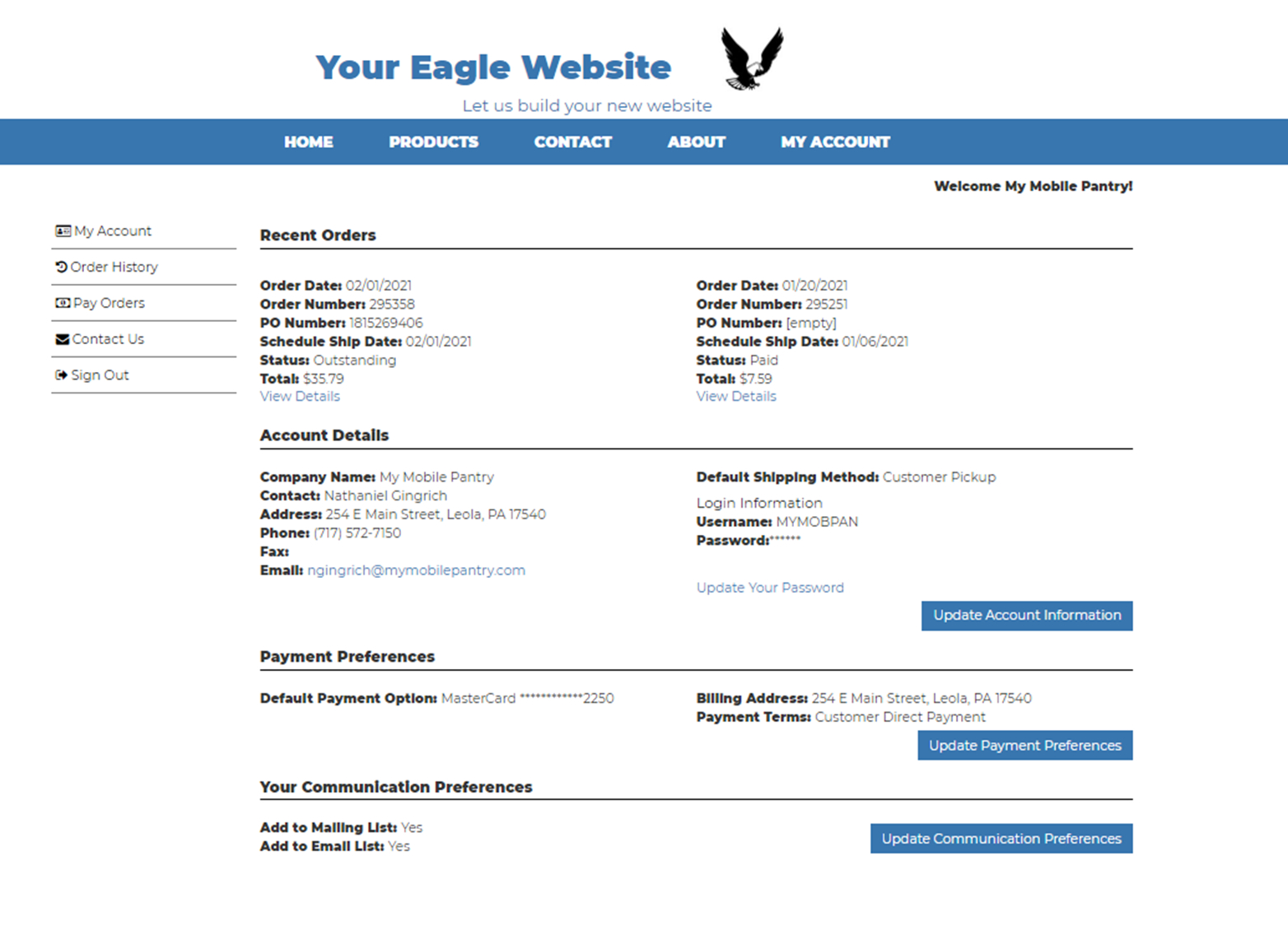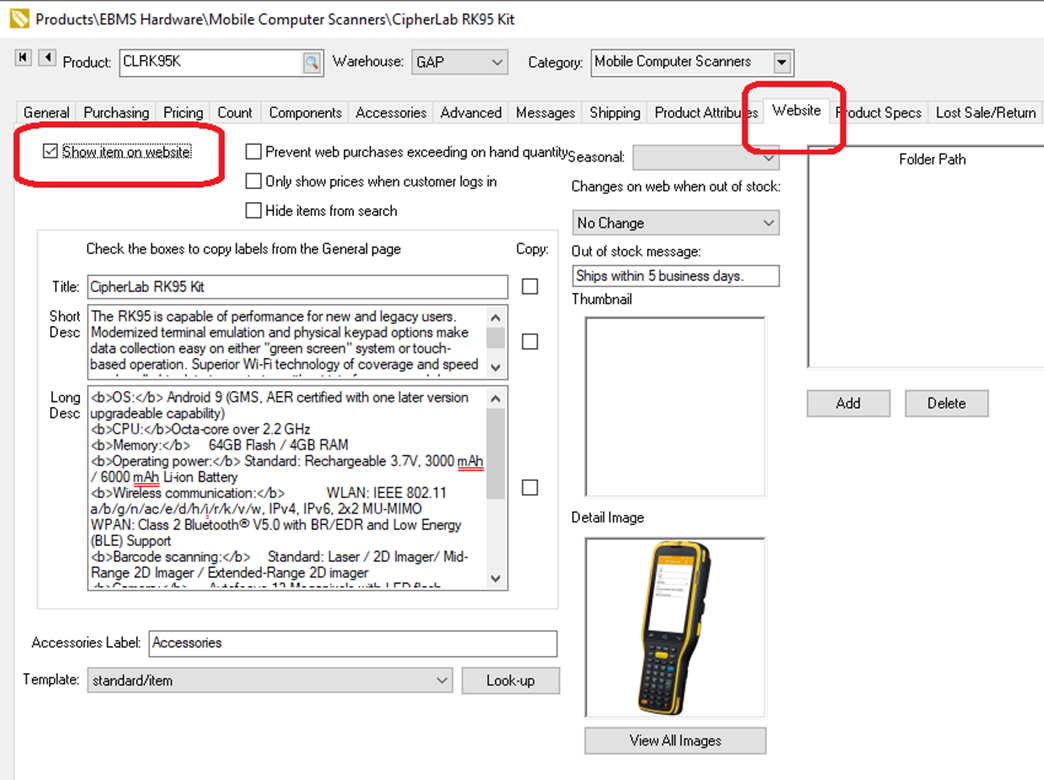Answering common questions about EBMS eCommerce.
Are you considering connecting your website to existing business operations? More and more companies are offering online shopping and customer service options to their customers. In today's video, Brian answers a few questions about our integrated eCommerce solution.
The EBMS eCommerce integration is a powerful tool that synchronizes customer, product catalog, and order information from EBMS to your website.
Question: How can EBMS work with my current website?
Most likely your company already has some form of an existing website. Maybe your website does not include a store or customer service portal and you now wish to expand your customer's experience online. Or perhaps your website does have these features but they are not connected to your EBMS data, creating a disjointed and maintenance-heavy experience.
The good news is that we are not here to replace your current website. We at Eagle Business Software are primarily a technology company, not a marketing company. We prefer to partner closely with your existing marketing team to create a store website and customer portal that is added to your current website. EBMS contains two options that allow you to integrate with an online store:
- EBMS Customer Portal and Website option - Most typically, we will create a sub-domain for the store and login section of your website. For example, if your website is eaglebusinesssoftware.com, we create a website – store.eaglebusinesssoftware.com that houses the customer portal and shopping cart. We work with your marketing team to consistently brand your new store and link it to your main website.
- EBMS RestAPI option- EBMS has an open RestAPI that allows you to pull information from EBMS as well as write information to the software. Using the RestAPI you can also connect online web stores, such as Shopify, WooCommerce, BigCommerce, etc, to the information in Eagle Business Software. This integration between EBMS and a third-party website, needs to be built by the customer or a third-party provider, such as a web developer.
Question: What information does EBMS sync with my website?
If you are working with the RestAPI option, EBMS makes all information available to your web team to integrate the current web store with the software.
If you are using the integrated EBMS eCommerce and customer portal option, there is quite a bit of information synced between Eagle Business Software and the website. These four main types of information are included:
- Customer Account Information - Your customers get an online portal where they log in to your website and view account information such as recent orders, account details, payment preferences, and communication preferences. They also get the ability to browse and buy online with their specific pricing and terms.

- Product Catalog Information - There are many options when listing and displaying product online. Information such as product unit of measure, pricing, optional components, made-to-order, accessories, availability, and more, are synced from the software to the website.
- New Sales Orders - As your customer is browsing they purchase product and add to the shopping cart. A sales order is created at checkout that includes their payment information and the product they ordered. This order appears in EBMS just as if your salesperson had created the order.
- Order History - Invoice information is uploaded from EBMS to the website. This allows your customer to easily login to their account, view their open sales orders, see past invoices, and make payments on outstanding invoices. Customers are also able to quickly reorder product or the entire invoice.
Question: How do I list my inventory online?
One of the benefits of connecting your website to EBMS is the ability to maintain one up-to-date product catalog. When eCommerce functionality is added to your software, a website tab is added to both your folder and item in Eagle Business Software. Inside of these inventory folders and items, you will check to “show on website”.
Other features inside the website tab also include preventing customers from buying more product than what you have on hand, only showing prices when a customer is logged in, removing product from the website if no longer in stock, setting template display options, and more!

Question: What effort is involved to set up an integrated EBMS eCommerce website?
First, we work with your team to evaluate what your goals are for the website. After this evaluation, setup steps normally include:
- Website setup and branding
- Adding the EBMS eCommerce website module to your software
- Updating your inventory folder structure
- Updating titles and descriptions for your folders and items
- Adding images to folders and items
- Setting folders and items to "show on website"
- Setting up shipping and payment options
- Communicating login and customer portal information to your customers
At Eagle Business Software, we would be happy to schedule a time to evaluate your eCommerce goals and help you determine which solution will best meet your needs!
Reach out to your account manager with questions or to get started. accountmanagement@eaglebusinesssoftware.com
Read More:
- 6 Big Benefits of Ecommerce ERP Integration
- Make it Easy to Get Paid
- Online Customer Portal - The Competitive Edge of Customer Service

Brian Esh is a Sales Consultant at Koble who is passionate about following Jesus and helping small businesses grow. Brian has spent nearly a decade working with numerous business leaders to facilitate growth by putting software to work. When not working, Brian enjoys competitive sports and spending time with his wonderful wife and two children.






